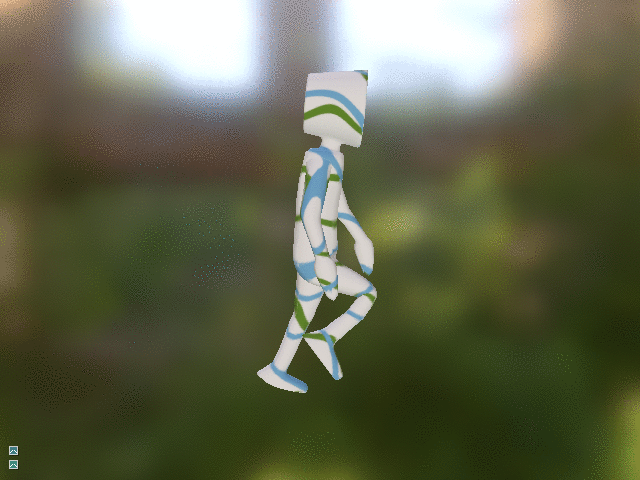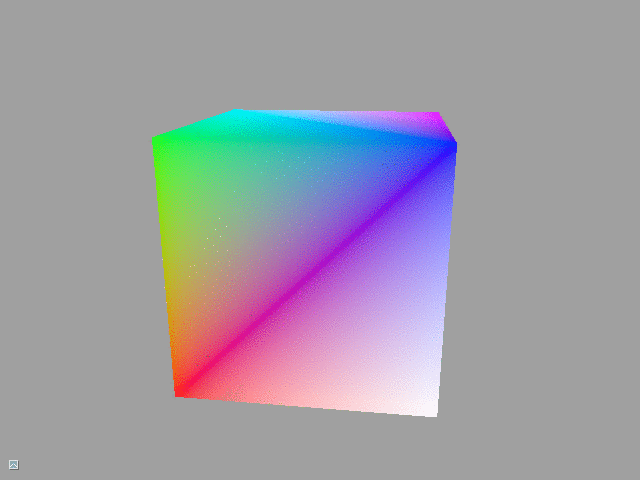This module contains tutorials and sample applications intended to demonstrate the usage of Diligent Engine. The module depends on the Core, Tools, and FX submodules.
To build and run the applications, please clone the main repository and follow the instructions.
| Platform | Build Status |
|---|---|
- Tutorials
- 01 - Hello Triangle
- 02 - Cube
- 03 - Texturing
- 03 - Texturing-C
- 03 - Texturing-DotNet
- 04 - Instancing
- 05 - Texture Array
- 06 - Multithreading
- 07 - Geometry Shader
- 08 - Tessellation
- 09 - Quads
- 10 - Data Streaming
- 11 - Resource Updates
- 12 - Render Target
- 13 - Shadow Map
- 14 - Compute Shader
- 15 - Multiple Windows
- 16 - Bindless Resources
- 17 - MSAA
- 18 - Queries
- 19 - Render Passes
- 20 - Mesh Shader
- 21 - Ray Tracing
- 22 - Hybrid Rendering
- 23 - Command Queues
- 24 - Variable Rate Shading
- 25 - Render State Packager
- 26 - Render State Cache
- 27 - Post-Processing
- 28 - Hello-OpenXR
- 29 - OIT
- Samples
- Build and Run Instructions
- License
- Contributing
This tutorial shows how to render simple triangle using Diligent Engine API.
This tutorial demonstrates how to render an actual 3D object, a cube. It shows how to load shaders from files, create and use vertex, index and uniform buffers.
This tutorial demonstrates how to apply a texture to a 3D object. It shows how to load a texture from file, create shader resource binding object and how to sample a texture in the shader.
This tutorial is identical to Tutorial03, but is implemented using the C API.
This tutorial demonstrates how to use the Diligent Engine API in .NET applications.
This tutorial demonstrates how to use instancing to render multiple copies of one object using unique transformation matrix for every copy.
This tutorial demonstrates how to combine instancing with texture arrays to use unique texture for every instance.
This tutorial shows how to generate command lists in parallel from multiple threads.
This tutorial shows how to use geometry shader to render smooth wireframe.
This tutorial shows how to use hardware tessellation to implement simple adaptive terrain rendering algorithm.
This tutorial shows how to render multiple 2D quads, frequently switching textures and blend modes.
This tutorial shows dynamic buffer mapping strategy using MAP_FLAG_DISCARD and MAP_FLAG_DO_NOT_SYNCHRONIZE
flags to efficiently stream varying amounts of data to GPU.
This tutorial demonstrates different ways to update buffers and textures in Diligent Engine and explains important internal details and performance implications related to each method.
This tutorial demonstrates how to render a 3d cube into an offscreen render target and do a simple post-processing effect.
This tutorial demonstrates how to render basic shadows using a shadow map.
This tutorial shows how to implement a simple particle simulation system using compute shaders.
This tutorial demonstrates how to use Diligent Engine to render to multiple windows.
This tutorial shows how to implement bindless resources, a technique that leverages dynamic shader resource indexing feature enabled by the next-gen APIs to significantly improve rendering performance.
This tutorial demonstrates how to use multisample anti-aliasing (MSAA) to make geometrical edges look smoother and more temporarily stable.
This tutorial demonstrates how to use queries to retrieve various information about the GPU operation, such as the number of primitives rendered, command processing duration, etc.
This tutorial demonstrates how to use the render passes API to implement simple deferred shading.
This tutorial demonstrates how to use amplification and mesh shaders, the new programmable stages, to implement view frustum culling and object LOD calculation on the GPU.
This tutorial demonstrates the basics of using ray tracing API in Diligent Engine.
This tutorial demonstrates how to implement a simple hybrid renderer that combines rasterization with ray tracing.
This tutorial demonstrates how to use multiple command queues to perform rendering in parallel with copy and compute operations.
This tutorial demonstrates how to use variable rate shading to reduce the pixel shading load.
This tutorial shows how to create and archive pipeline states with the render state packager off-line tool on the example of a simple path tracer.
This tutorial expands the path tracing technique implemented in previous tutorial and demonstrates how to use the render state cache to save pipeline states created at run time and load them when the application starts.
This tutorial demonstrates how to use post-processing effects from the DiligentFX module.
This tutorial demonstrates how to use Diligent Engine with OpenXR API to render a simple scene in a VR headset.
This tutorial demonstrates how to implement order-independent transparency (OIT) methods to render transparent objects without sorting.
This sample demonstrates how to integrate Epipolar Light Scattering post-processing effect into an application to render physically-based atmosphere.
This simple maze mini-game demonstrates how to use GLFW to create window and handle keyboard and mouse input.
 |
 |
 |
 |
This sample demonstrates how to use the Asset Loader and GLTF PBR Renderer to load and render GLTF models.
This sample demonstrates how to render USD files using Hydrogent, an implementation of the Hydra rendering API in Diligent Engine.
This sample demonstrates how to integrate the Shadowing component into an application to render high-quality shadows.
This sample demonstrates the integration of the engine with dear imgui UI library.
This sample demonstrates the integration of the engine with nuklear UI library.
This sample demonstrates how to use Diligent Engine in a basic Android AR application.
This sample is designed to be a performance benchmark and is based on this demo developed by Intel. It renders 50,000 unique textured asteroids. Every asteroid is a combination of one of 1000 unique meshes and one of 10 unique textures. The sample uses original D3D11 and D3D12 native implementations, and adds implementations using Diligent Engine API to allow comparing performance of different rendering modes.
This project demonstrates integration of Diligent Engine with Unity.
Please refer to Build and Run Instructions section in the master repository's readme.
Command line options:
- --mode, -m {d3d11|d3d12|vk|gl} - select rendering back-end (example: --mode d3d12, -m vk).
- --width, -w value - set desired window width (example: --width 1024, -w 1280).
- --height, -h value - set desired window height (example: --height 768, -h 1024).
- --capture_path path - path to the folder where screen captures will be saved. Specifying this parameter enables screen capture (example: --capture_path .).
- --capture_name name - screen capture file name. Specifying this parameter enables screen capture (example: --capture_name frame).
- --capture_fps fps - recording fps when capturing frame sequence (example: --capture_fps 10). Default value: 15.
- --capture_frames value - number of frames to capture after the app starts (example: --capture_frames 50).
- --capture_format {jpg|png} - image file format (example: --capture_format jpg). Default value: jpg.
- --capture_quality value - jpeg quality (example: --capture_quality 80). Default value: 95.
- --capture_alpha value - when saving png, whether to write alpha channel (example: --capture_alpha 1). Default value: false.
- --validation value - set validation level (example: --validation 1). Default value: 1 in debug build; 0 in release builds.
- --adapter value - select GPU adapter, if there are more than one installed on the system (example: --adapter 1). Default value: 0.
- --adapters_dialog value - whether to show adapters dialog (example: --adapters_dialog 0). Default value: 1.
- --show_ui value - whether to show user interface (example: --show_ui 0). Default value: 1.
- --golden_image_mode {none|capture|compare|compare_update} - golden image capture mode. Default value: none.
- --golden_image_tolerance value - golden image comparison tolerance. Default value: 0.
- --non_separable_progs value - force non-separable programs in GL
When image capture is enabled the following hot keys are available:
- F2 starts frame capture recording.
- F3 finishes frame capture recroding.
- F4 saves single screenshot.
To record multiple frames after the app starts, use command line like this:
--mode d3d12 --capture_path . --capture_fps 15 --capture_name frame --width 640 --height 480 --capture_format png --capture_frames 50
See Apache 2.0 license.
This project has some third-party dependencies, each of which may have independent licensing:
- nuklear: A single-header ANSI C gui library (MIT or Public domain license).
- glfw: A multi-platform library for OpenGL, OpenGL ES, Vulkan, window and input (zlib License).
- ImGuizmo: Immediate mode 3D gizmo for scene editing and other controls based on Dear Imgui (MIT).
To contribute your code, submit a Pull Request to this repository. Diligent Engine is licensed under the Apache 2.0 license that guarantees that content in the DiligentSamples repository is free of Intellectual Property encumbrances. In submitting any content to this repository, you license that content under the same terms, and you agree that the content is free of any Intellectual Property claims and you have the right to license it under those terms.
Diligent Engine uses clang-format to ensure consistent source code style throughout the code base. The format is validated by CI for each commit and pull request, and the build will fail if any code formatting issue is found. Please refer to this page for instructions on how to set up clang-format and automatic code formatting.









































